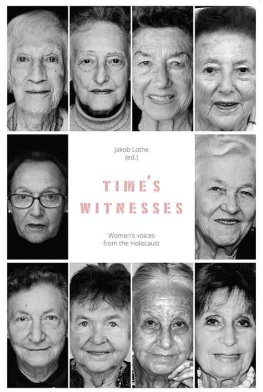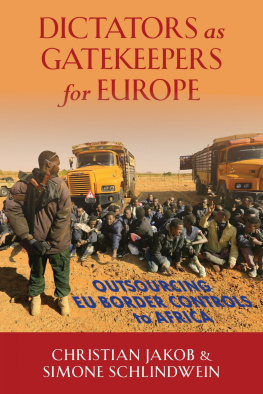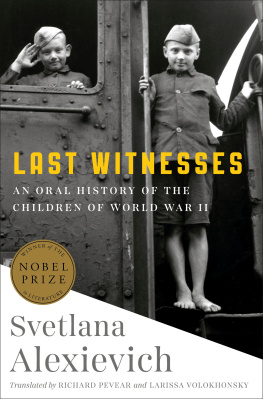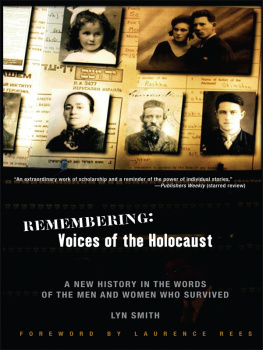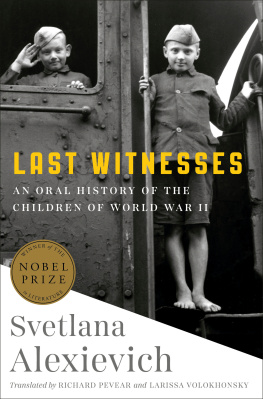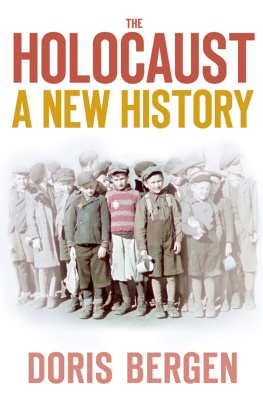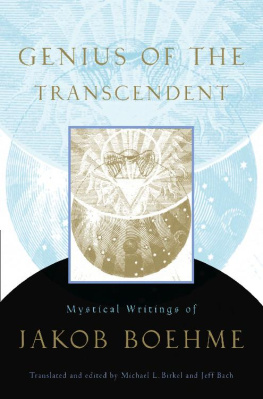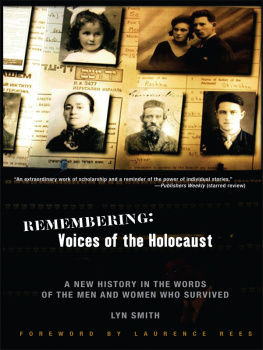Jakob Lothe - Time’s Witnesses: Women’s Voices from the Holocaust
Here you can read online Jakob Lothe - Time’s Witnesses: Women’s Voices from the Holocaust full text of the book (entire story) in english for free. Download pdf and epub, get meaning, cover and reviews about this ebook. year: 2017, publisher: Fledgling Press, genre: Religion. Description of the work, (preface) as well as reviews are available. Best literature library LitArk.com created for fans of good reading and offers a wide selection of genres:
Romance novel
Science fiction
Adventure
Detective
Science
History
Home and family
Prose
Art
Politics
Computer
Non-fiction
Religion
Business
Children
Humor
Choose a favorite category and find really read worthwhile books. Enjoy immersion in the world of imagination, feel the emotions of the characters or learn something new for yourself, make an fascinating discovery.
- Book:Time’s Witnesses: Women’s Voices from the Holocaust
- Author:
- Publisher:Fledgling Press
- Genre:
- Year:2017
- Rating:4 / 5
- Favourites:Add to favourites
- Your mark:
- 80
- 1
- 2
- 3
- 4
- 5
Time’s Witnesses: Women’s Voices from the Holocaust: summary, description and annotation
We offer to read an annotation, description, summary or preface (depends on what the author of the book "Time’s Witnesses: Women’s Voices from the Holocaust" wrote himself). If you haven't found the necessary information about the book — write in the comments, we will try to find it.
Jakob Lothe: author's other books
Who wrote Time’s Witnesses: Women’s Voices from the Holocaust? Find out the surname, the name of the author of the book and a list of all author's works by series.
Time’s Witnesses: Women’s Voices from the Holocaust — read online for free the complete book (whole text) full work
Below is the text of the book, divided by pages. System saving the place of the last page read, allows you to conveniently read the book "Time’s Witnesses: Women’s Voices from the Holocaust" online for free, without having to search again every time where you left off. Put a bookmark, and you can go to the page where you finished reading at any time.
Font size:
Interval:
Bookmark:

Jakob Lothe 2017
The author asserts the moral right to be identified
as the author of the work in accordance with the
Copyright, Designs and Patents Act, 1988.
No part of this publication may be reproduced, stored in a retrieval system or transmitted in any form or by any means, electronic, mechanical, photocopying, recording or otherwise, without the prior permission of
Fledgling Press Ltd, Edinburgh
First published by GYLDENDAL 2013
Copyright Gyldendal Norsk Forlag AS 2013. [All rights reserved.]
This translation has been published with the financial support of NORLA
www.fledglingpress.co.uk
Print ISBN: 9781905916900
eBook ISBN: 9781905916894
Preface
This book presents the histories of ten Jewish women who survived the Nazi concentration and extermination camps during World War Two. The women were born in Europe between 1925 and 1935. After the war four of them settled in Norway and became Norwegian citizens. Today, the six other women live on four different continents.
Times Witnesses: Womens Voices from the Holocaust is inspired by Times Witnesses: Narratives from Auschwitz and Sachsenhausen (2006), which I co-edited with Anette H. Storeide, and which presents the stories of eight Norwegian camp survivors. By focusing solely on these two camps, we were only able to find male survivors to interview. At the same time the necessity of communicating womens narratives became obvious. Working to present Norwegian womens voices from the Holocaust, it is a significant problem that none of the Jewish women and children who were deported from Norway to the Nazi concentration camps returned. This is the reason why the ten Jewish women who present their accounts in this book were born in other European countries.
Working on this book has been challenging. As these challenges concern both the way the book is structured and also are closely connected to the content of the narratives, I write more about this in the introduction. Yet I would also like to stress here that although the topic of the book is dispiriting, it has been a privilege to once again meet and listen to time witnesses who have put their confidence in me by telling me their histories. They also put that confidence in the readers of this book. Time and again I am struck by the strength and courage that these ten women demonstrate by thinking back on experiences they may rather want to put behind them in order to carry on with their lives. The irrepressible will to live which helped them survive is evident in the narratives. At the same time all ten women recognise that their survival depended on chance.
Nazi Germanys five-year occupation of Norway (19401945) was formative for the war generation. Parents and grandparents who were profoundly affected by their experiences during the war have also influenced those born after 1945. For my part, the greatest influence has come from my mother, Eldfrid Lothe. Mother was in Cambridge, England, when World War Two began in September 1939. She had a small black diary with the year 1939 printed on the cover. Reading her entry for 1 September 1939, detailing how shocked people in Cambridge were that Nazi Germany had invaded Poland, made an impression on me. For my mother the war became both formative and identity-confirming. And thus it became so for me as well.
***
I would like to thank Anette H. Storeide for the inspiration and good advice she has given me. I would also like to thank photographer Agnete Brun for her enthusiasm for this book project and for the portraits she has taken of the four Norwegian women, and photographer Steve Nelson, who has taken the portraits of Maria Segal and Judith Meisel. The portraits were taken at the time the witnesses narrated their accounts. I also thank the time witnesses for lending me the photographs taken of them when they were young and which are presented alongside the present-day portraits.
This book is not only inspired by Times Witnesses (2006), but also by After Testimony: The Ethics and Aesthetics of Holocaust Narrative for the Future , a collection of essays which discusses how different forms of documentaries and fictional narratives can communicate, rework, and represent the historical event that was the Holocaust and continue to do so after the last time witnesses are gone. I would like to thank my two co-editors of After Testimony , Susan Rubin Suleiman and James Phelan, and additionally, Jeremy Hawthorn, J. Hillis Miller, and Irene Kacandes, for their help and encouragement. I thank Janet Walker for inviting me to give guest lectures at the University of California, Santa Barbara, and for introducing me to Maria Segal and Judith Meisel, who both tell their stories in Times Witnesses: Womens Voices from the Holocaust .
Several museums have been of help through their exhibitions and competent employees who have suggested time witnesses I could approach for interviews and who have assisted me in having the accounts adjusted and approved. I would like to thank The Jewish Federation of Santa Barbara, The Kaplan Centre for Jewish Studies (Cape Town), Sydney Jewish Museum, the Center for Studies of the Holocaust and Religious Minorities (Oslo), and The Jewish Museum in Oslo. Particular thanks go to Helga Arntzen, Marie Bonardelli, Jurina Boyes, Julie Feilberg, Richard Freedman, Marit Langmyr, Peter Major, Norman Seligman and Mariela Sztrum. Jane Arnfield, Mandy Stewart, and Helena Svojsikova have been of great help with Zdenka Fantlovs account.
I thank Irene Levin for her valuable assistance as a consultant. Thanks also go to Oddvar Schjlberg, who gave me permission to use material from his book on Blanche Major, Jeg overlevde Auschwitz [I survived Auschwitz], and to Irene Engelstad, Per Kristian Sebak and Arne Johan Vetlesen for constructive comments on the introduction. Elin Toft and Anders Toft Lothe have given me invaluable help and support.
The most important task remains: to thank the ten survivorsthe time witnesses who made this book possible.
Oslo, November 2016
Jakob Lothe
Introduction
The Norwegian Holocaust
During the autumn and winter of 19421943, 772 Jews were deported from Norway to the Nazi concentration and extermination camps, most of them to Auschwitz. Of these, 34 survived.
Of the Jews who were deported from Norway, no children and no women survived Auschwitz. For that reason, there are no witnesses for these two groups of Norwegian Jews. The approximately 300 women and children who were deported to Auschwitz were murdered. Here there is a narrative voida silence. The situation in Norway thus differs completely from that in the other Scandinavian countries. As a neutral country, Sweden was not occupied by Nazi Germany, and the Swedish Jews were therefore not deported. In Denmark the Nazis attempted to deport the approximately 8,000 Jews, but thanks to large-scale civilian efforts, the vast majority managed to escape to safety in Sweden in October 1943. 481 Jews were arrested in Denmark and deported to the ghetto and the concentration camp of Theresienstadtof these 52 died.
When Nazi Germany invaded Norway on 9 April 1940, about 2,100 Jews were living in the country. Their situation immediately became precarious. The historian Bjarte Bruland distinguishes between three phases in the Nazi hunt for the Jews in Norway. The first phase, from April 1940 to January 1942, was dominated by single actions that were not necessarily part of a systematic anti-Jewish policy. In a brief intermediate phase, from January to October 1942, preparations were made for the third phase: the extermination phase of October 1942 to February 1943. During this last phase the Norwegian police carried out a series of arrests of Norwegian Jews, and there were four deportations to concentration and extermination camps. The women and children were in the two largest groups, which were sent on the ships Donau and Gotenland .
Font size:
Interval:
Bookmark:
Similar books «Time’s Witnesses: Women’s Voices from the Holocaust»
Look at similar books to Time’s Witnesses: Women’s Voices from the Holocaust. We have selected literature similar in name and meaning in the hope of providing readers with more options to find new, interesting, not yet read works.
Discussion, reviews of the book Time’s Witnesses: Women’s Voices from the Holocaust and just readers' own opinions. Leave your comments, write what you think about the work, its meaning or the main characters. Specify what exactly you liked and what you didn't like, and why you think so.

